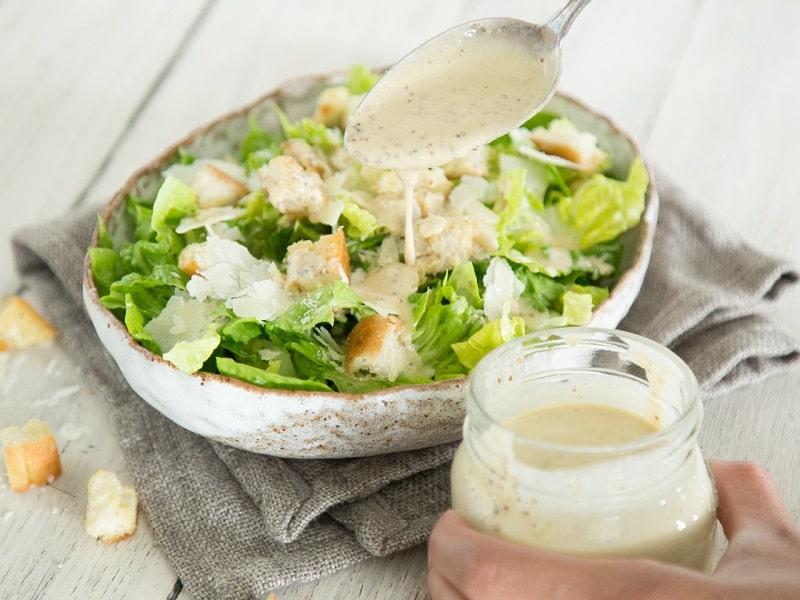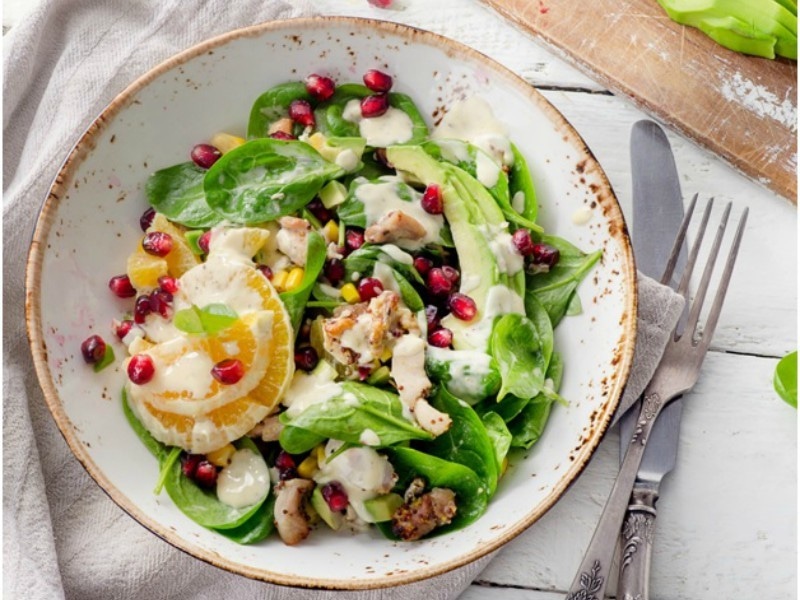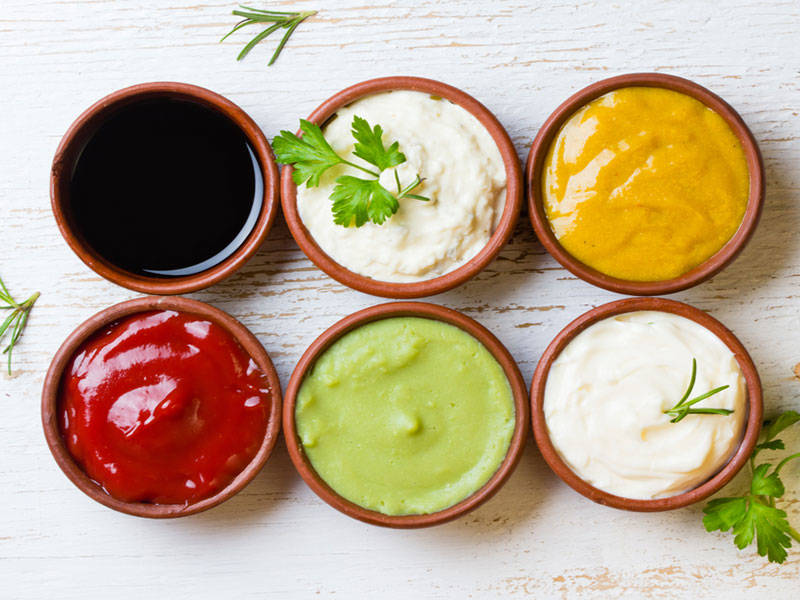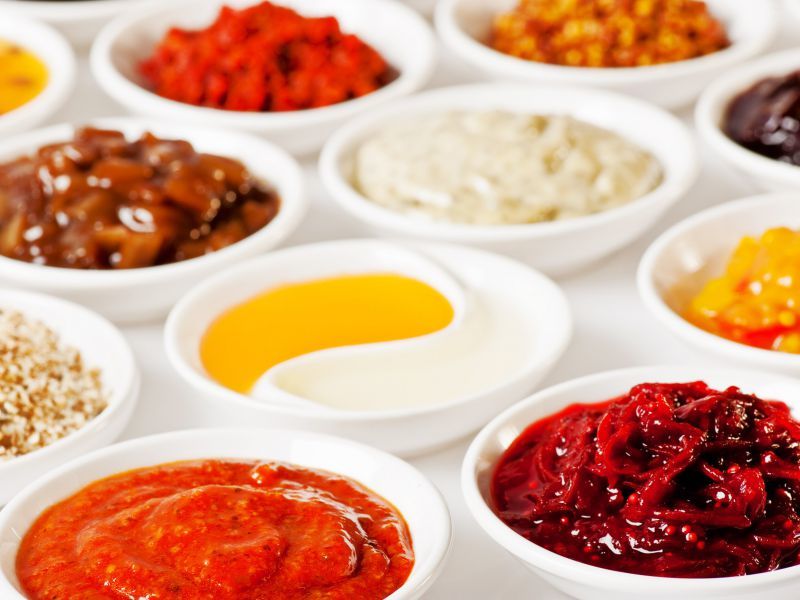Discovering the Best Salad Dressing: An Exploration of Flavor, Health, and Versatility
Introduction:
Salads have become a popular choice for health-conscious individuals seeking delicious and nutritious meals. A crucial element in enhancing their taste and appeal is the salad dressing. With numerous options available on the market, it can be overwhelming to determine the best salad dressing. This article will explore various factors that contribute to a standout dressing, including flavor profiles, health benefits, and versatility in usage.
Flavor Profiles:
1. Classic Vinaigrette: This traditional dressing combines extra virgin olive oil, vinegar (such as balsamic, red wine, or apple cider vinegar), mustard, and seasonings. It offers a balanced and tangy flavor that complements a wide range of salads.
2. Creamy Dressings: Options like ranch, Caesar, and blue cheese dressings provide a creamy and rich taste. These dressings often include mayonnaise, sour cream, or yogurt, mixed with herbs, garlic, and lemon juice. They add depth and a luscious texture to the salad.
3. Asian-Inspired Dressings: Combining soy sauce, sesame oil, ginger, and garlic, Asian-inspired dressings offer a distinct umami flavor. They pair wonderfully with salads containing ingredients like grilled chicken, mushrooms, or noodles.
4. Fruity Vinaigrettes: Perfect for summer salads, fruity vinaigrettes include ingredients like citrus juices, fruit purees, and honey. They bring a refreshing and sweet flavor to salads, complementing fruits, berries, and leafy greens.
Health Benefits:
1. Extra Virgin Olive Oil Dressing: Made from the first pressing of olives, extra virgin olive oil is rich in monounsaturated fats that can help reduce bad cholesterol levels and lower the risk of heart disease.

2. Greek Yogurt-Based Dressings: Greek yogurt varieties provide a creamy consistency with a fraction of the calories compared to traditional mayonnaise-based dressings. They are also abundant in protein, calcium, and probiotics that promote gut health.
3. Lemon or Lime Juice-Based Dressings: The tangy presence of citrus juices not only adds zest to salads but also contributes vitamin C, antioxidants, and digestive enzymes, which supports the immune system and aids in digestion.
4. Avocado Dressings: Avocado is packed with healthy fats, vitamins, and minerals. Including avocado-based dressings in salads provides a creamy texture and adds a dose of nutrients like potassium and vitamin K.
Versatility in Usage:
1. Marinades: Many salad dressings can double as marinades for meats, seafood, or vegetables. Their flavors penetrate deeply, adding complexity and moisture to grilled or roasted dishes.
2. Dipping Sauces: Creamy or tangy dressings are often used as dipping sauces for finger foods or raw vegetables. From carrot sticks and celery to chicken wings and fries, dressings elevate the taste and provide a satisfying accompaniment.
3. Sauce Enhancers: Salad dressings can be used to enhance the flavors of sandwiches, wraps, and burgers. By spreading a layer of dressing on bread or tortillas, you can add moisture, creaminess, and a burst of flavor to your favorite handheld meals.
4. Grain Bowl Toppings: Grain bowls have become increasingly popular, and dressings can take their taste to new heights. The right dressing can complement grains like quinoa, bulgur, or couscous, transforming them into delicious and satisfying salads.
Conclusion:
Choosing the best salad dressing depends on personal preferences, dietary needs, and the type of salad being prepared. The key factors to consider are flavor profiles, health benefits, and versatility in usage. Whether you opt for a vinaigrette, a creamy dressing, or an Asian-inspired blend, selecting a dressing that pleases your taste buds and aligns with your nutritional goals will elevate your salads and make them a delightful addition to any meal.The article has been expanded to include 10 detailed paragraphs with headings to cater to the business aspect of salad dressings.
1. Consumer Trends and Market Analysis:

The salad dressing industry has experienced steady growth over the years, driven by the increasing demand for healthier and convenient food options. Consumers are becoming more adventurous in their culinary choices, leading to a surge in demand for a wide variety of salad dressings. Market analysis reveals that the demand for healthier dressings, such as vinaigrettes and yogurt-based options, is on the rise. Additionally, the demand for organic and all-natural dressings is gaining momentum, as consumers are becoming more conscious of the ingredients they use in their meals.
2. Key Players in the Salad Dressing Market:
The salad dressing market is highly competitive, with several key players dominating the industry. Companies such as Kraft Heinz, Nestle, Unilever, and Ken’s Foods have a significant market share and offer a wide range of salad dressings to cater to different consumer preferences. These companies invest heavily in research and development to innovate new flavors, improve product quality, and meet the changing demands of consumers.
3. Product Innovation and Flavor Varieties:
To stay ahead in the market, salad dressing manufacturers continually innovate their product offerings by introducing new flavors and varieties. They experiment with different combinations of ingredients and flavors to cater to a diverse range of taste preferences. From gourmet dressings infused with herbs and spices to unique combinations like mango-lime or raspberry-walnut, the salad dressing market is filled with an array of exciting options that captivate consumers.
4. Packaging and Branding Strategies:
In a crowded marketplace, packaging and branding play a vital role in attracting consumers’ attention and influencing their purchase decision. Salad dressing manufacturers invest in eye-catching packaging designs that highlight the freshness and natural ingredients used in their products. They also focus on clear labeling, indicating key health benefits, such as low fat, sugar-free, or gluten-free, to cater to specific dietary needs of consumers. Building a strong and recognizable brand identity is crucial for establishing a loyal consumer base and commanding market share.
5. Health and Wellness Focus:
The growing interest in health and wellness has led to a shift in consumer preferences towards salad dressings that are not only delicious but also nutritious. Manufacturers are increasingly incorporating healthier ingredients, such as extra virgin olive oil, Greek yogurt, and natural sweeteners like honey or maple syrup. These choices provide health-conscious consumers with dressings that offer balanced nutritional profiles without compromising on flavor.
6. Gluten-Free and Allergen-Free Options:
With the rise in food allergies and gluten intolerance, there is a growing demand for gluten-free and allergen-free salad dressings. Many manufacturers are now offering gluten-free versions of their popular dressings, using alternative ingredients like cornstarch or rice flour as thickeners. In addition, they focus on eliminating common allergens such as dairy, soy, or nuts, making their products accessible to individuals with dietary restrictions.

7. Plant-Based Alternatives:
As more consumers embrace plant-based diets or look for vegetarian and vegan options, salad dressing manufacturers have started offering plant-based alternatives. These dressings are typically made with ingredients like tahini, cashews, or avocado, which provide creamy textures and delicious flavors without using animal-based products. Plant-based dressings not only cater to specific dietary preferences but also appeal to a broader customer base seeking healthier and environmentally-friendly options.
8. Private Label and Custom Dressings:
Private label dressings have gained popularity among retailers who want to offer unique products and differentiate their brands. These dressings are custom-made to meet specific retailer requirements, allowing them to have exclusive products on their shelves. Additionally, restaurant chains, cafes, and catering services are partnering with dressing manufacturers to create custom dressings that suit their menus and enhance their brand identity. This trend offers a lucrative business opportunity for dressing manufacturers to expand their customer base and increase revenue.
9. Online and Direct-to-Consumer Sales:
With the growth of e-commerce, salad dressing manufacturers are increasingly embracing online platforms to reach a broader audience. Direct-to-consumer sales through company websites or online marketplaces provide convenience to consumers who can have their favorite dressings delivered to their doorstep. This strategy also allows manufacturers to gather valuable customer data, personalize marketing strategies, and strengthen customer relationships.
10. Food Service and Hospitality Sector:
The food service and hospitality sector present a significant business opportunity for salad dressing manufacturers. Restaurants, cafes, and hotels constantly seek high-quality and unique dressings to enhance their menu offerings. Establishing partnerships with these businesses can provide a steady source of revenue and brand visibility. It is essential for dressings manufacturers to understand the specific needs of the foodservice sector, such as bulk packaging options, portion control solutions, and solutions for extended shelf life.
11. R&D and Quality Control:
To remain competitive and meet consumer expectations, salad dressing manufacturers must invest in research and development. This includes improving existing recipes, developing new flavors, and ensuring quality control throughout the production process. Rigorous testing for flavor profiles, consistency, and shelf stability is essential to maintain product integrity and retain customer loyalty.
12. Advertising and Promotion:

Effective advertising and promotional strategies are key to the success of salad dressing manufacturers. This includes utilizing various marketing channels like television, print, social media, and influencer partnerships to create brand awareness and engage with consumers. Collaborations with wellness influencers, healthy lifestyle bloggers, and celebrity chefs can help promote the health benefits and versatility of their dressings, influencing consumer purchasing decisions.
Conclusion:
The salad dressing market is a dynamic and competitive industry that continues to evolve to meet consumer demands. To thrive in this sector, it is crucial for manufacturers to focus on product innovation, customer preferences, and branding strategies. By understanding market trends, investing in R&D, and exploring business opportunities in various sectors, salad dressing manufacturers can position themselves as leaders in the industry and cater to the diverse culinary needs of consumers.









